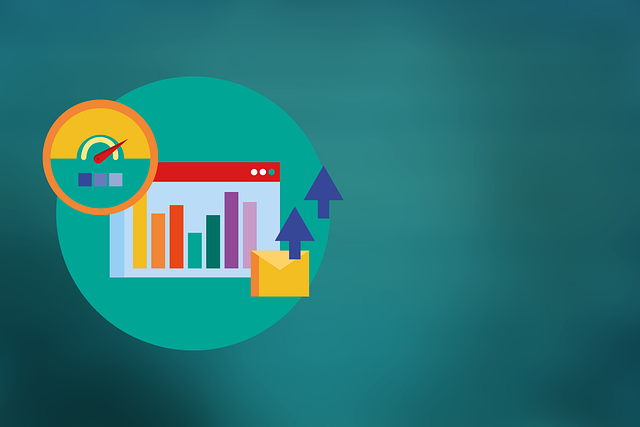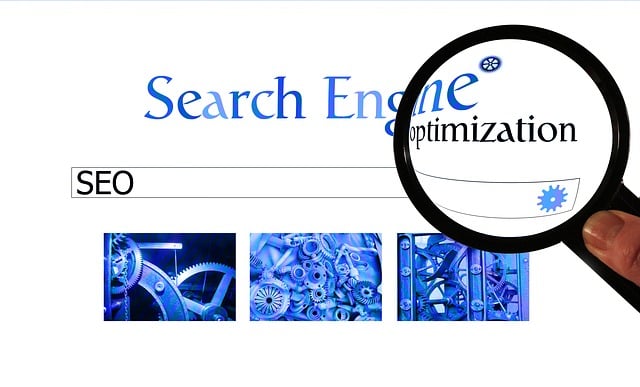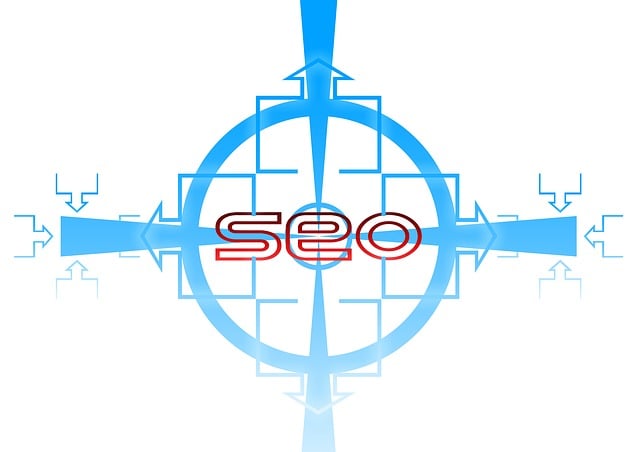On-Page SEO, a critical strategy for boosting web page rankings, emphasizes page speed optimization as a key component. Fast-loading pages enhance user experience by reducing bounce rates and increasing time spent on the site, directly impacting engagement and conversion rates—all vital SEO metrics. Strategies to optimize speed include minifying code and images, leveraging browser caching, using CDNs, choosing appropriate image formats, and managing JavaScript effectively. Balancing visual appeal with swift loading times through image optimization is also crucial. Caching static assets, implementing well-structured URLs, and utilizing tools for diagnosing slow pages further strengthen On-Page SEO efforts. Regular page speed audits and updates are essential to maintain optimal performance.
In today’s digital era, page speed optimization is a crucial aspect of On-Page SEO that can significantly impact your website’s visibility and user experience. A fast-loading site enhances engagement, improves search rankings, and reduces bounce rates. This article delves into the essential techniques for optimizing web pages, exploring key factors, HTML/CSS strategies, JavaScript performance enhancements, image compression, caching, URL structures, and diagnostic tools. By implementing these best practices, you can ensure your website delivers a seamless experience while boosting its SEO potential.
Understanding On-Page SEO and Its Impact on Page Speed

On-Page SEO is a crucial aspect of search engine optimization that focuses on optimizing individual web pages to rank higher in search results. It involves various techniques and strategies to ensure a page provides a positive user experience while also signaling to search engines that it’s a relevant and valuable resource. One of the key elements of On-Page SEO is page speed, which refers to how quickly a webpage loads. Fast-loading pages are favored by both users and search engines alike.
When discussing page speed optimization for SEO, understanding its connection with on-page factors becomes evident. Search engines, like Google, have explicitly stated that page speed is a ranking signal. This means that faster websites tend to rank higher in search results than slower ones, assuming all other factors are equal. Additionally, improved page speed enhances user experience by reducing bounce rates and increasing time spent on the site, which can lead to better engagement and conversion rates—all of which positively impact SEO performance.
Key Factors for Optimizing Web Pages for Speed

Optimizing web pages for speed is a critical aspect of on-page SEO, as it directly impacts user experience and search engine rankings. Key factors include minimizing page load times, ensuring efficient code and image compression, and leveraging browser caching. Fast-loading pages enhance user engagement, lower bounce rates, and send positive signals to search engines, contributing to better organic search positions.
Effective strategies involve compressing HTML, CSS, and JavaScript files without sacrificing functionality, using content delivery networks (CDNs) to distribute content globally, and optimizing images by choosing the right formats (like WebP or JPEG 2000) and resizing them appropriately. These techniques not only speed up page load but also reduce server load, ensuring your website performs optimally and ranks higher in search results.
HTML and CSS Techniques to Boost Loading Times

Optimizing HTML and CSS is a powerful on-page SEO technique that can significantly enhance your website’s loading speed. One effective strategy is to minify these code snippets, removing unnecessary characters like spaces and comments while retaining functionality. This reduces file sizes, leading to faster load times. Additionally, enabling compression for HTML and CSS files allows servers to deliver content more efficiently.
Another essential technique involves leveraging browser caching. By setting appropriate cache-control headers, you enable browsers to store and reuse resources, thereby speeding up subsequent page loads. For static assets like CSS files, consider using a Content Delivery Network (CDN). CDNs distribute content across multiple servers worldwide, reducing latency and ensuring visitors access the fastest version of your website’s stylesheets.
The Role of JavaScript in Page Performance Enhancement

JavaScript plays a pivotal role in modern web development and has a significant impact on page performance, an essential aspect of On-Page SEO. Its dynamic nature allows for interactive and engaging user experiences, but it can also be a double-edged sword when it comes to speed. Optimizing JavaScript is crucial to ensure your website loads swiftly without compromising functionality. One effective strategy is to minify and bundle scripts, reducing file sizes and minimizing the number of HTTP requests, which in turn speeds up rendering times.
Additionally, lazy loading and code splitting techniques can be employed to load JavaScript only when needed, delaying non-critical scripts until they are required for optimal user experience while also enhancing page speed metrics that search engines consider during ranking algorithms. By intelligently managing JavaScript, developers can significantly improve overall website performance, contributing to better SEO outcomes.
Image Optimization: Compressing Visual Assets Without Sacrificing Quality

Image optimization is a crucial aspect of on-page SEO, as it ensures that your website’s visual assets enhance user experience without negatively impacting loading times. Compressing images effectively reduces their file size, allowing for faster page loads. However, it’s essential to strike a balance; sacrificing image quality can deter visitors and hurt engagement metrics. Modern compression tools offer advanced techniques like lossless compression, which minimizes file size while preserving detail.
By incorporating these strategies, webmasters can ensure that images load swiftly, contributing to better search engine rankings. This is particularly important given that Google and other search engines prioritize websites with fast loading times, recognizing their positive impact on user satisfaction and retention.
Leveraging Caching for Faster Page Re-loads

Leveraging caching is a powerful strategy within on-page SEO to significantly speed up page reloads and enhance user experience. By storing static assets like images, CSS files, and JavaScript in a cache, subsequent requests can be served much faster, reducing server load and improving response times. This technique is particularly beneficial for websites with frequent visitors who may have already loaded these resources, allowing the site to deliver them almost instantly from the browser’s local cache.
Effective caching implementation involves setting appropriate expiration headers on your web server. These headers instruct browsers when to consider a resource outdated and request a fresh copy from the server. Balancing cache duration with freshness ensures that users receive up-to-date content while also benefiting from faster load times. This simple optimization can dramatically impact overall page speed, contributing to better SEO rankings and higher user satisfaction.
URL Structure and Rewriting for Improved User Experience

A well-structured URL is not just aesthetically pleasing; it significantly enhances user experience and contributes to robust on-page SEO practices. Clean, descriptive URLs make it easier for visitors to understand where they are and what your website offers. This simplicity encourages them to explore further, reducing bounce rates. Additionally, search engines like Google favor URLs that are easy to read and understand, which can lead to better rankings.
URL rewriting involves transforming complex web addresses into more user-friendly ones. This technique allows you to organize your site hierarchy logically, making it crawlable and indexable efficiently. By using keywords in your URLs, you provide both users and search engines with valuable context about the content they are about to engage with. This not only improves navigation but also ensures that relevant traffic is directed to specific pages, boosting the overall SEO performance.
Analyzing and Diagnosing Slow Web Pages with Tools

Analyzing and diagnosing slow web pages is a crucial step in optimizing your site for both users and search engines. Tools like Google PageSpeed Insights, GTmetrix, Pingdom, and WebPageTest offer detailed insights into page performance, breaking down factors that contribute to speed issues. These tools provide a comprehensive report on critical elements such as server response time, resource loading, and HTML code efficiency. For instance, Google’s PageSpeed Insights not only scores your page’s performance but also offers actionable suggestions tailored to both mobile and desktop environments, which is essential for On-Page SEO.
By leveraging these tools, webmasters can quickly identify problem areas, whether it’s large image files, slow-loading scripts, or inefficient HTML code. Once diagnosed, targeted optimization strategies can be implemented to reduce page load times, ensuring a seamless user experience and enhancing the site’s overall search engine visibility.
Best Practices for Continuous On-Page SEO Speed Optimization

To continually optimize your site’s speed for On-Page SEO, start by conducting regular page speed audits using reliable tools like Google PageSpeed Insights or GTmetrix. These audits provide detailed insights into load times and offer actionable recommendations tailored to specific issues. Prioritize addressing critical errors first, such as slow HTML parsing, large image files, or inefficient CSS and JavaScript delivery.
Implement best practices like minifying and compressing assets, leveraging browser caching for static resources, and optimizing images for web use. Additionally, ensure a content delivery network (CDN) is in place to distribute your content geographically closer to users, reducing latency and enhancing overall page speed. Regularly updating your site’s code and keeping dependencies up-to-date can also significantly contribute to sustained On-Page SEO performance improvements.
